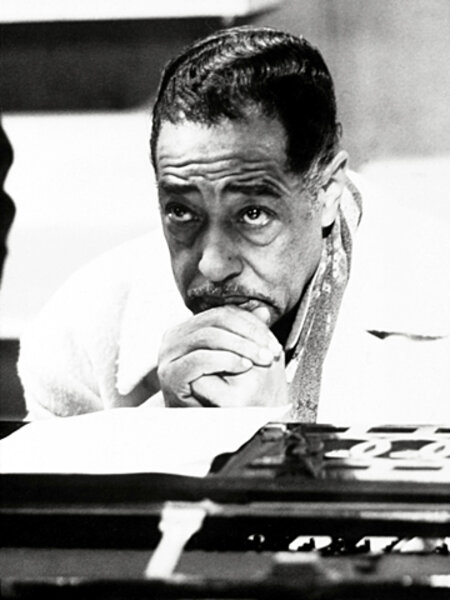Jazz classics that were lost and found
| New York
For decades, the Savory Collection was the stuff of legend. Rumored to be a series of jazz recordings preserved by William Savory during the 1930s, it was whispered about and alluded to but never actually seen. Unlike many legends, however, reality exceeded everyone's dreams.
"I thought maybe there would be 50 to 100 recordings and that would be phenomenal," says Loren Schoenberg, the executive director of the National Jazz Museum in Harlem, which recently acquired the collection. "But there are almost 1,000."
Stored for decades in cardboard boxes, the professional-grade, 16-in. aluminum and acetate discs bear the names of the jazz greats, including Lester Young, Billie Holiday, and Benny Goodman. A professional sound engineer, Mr. Savory recorded the music for his own use directly from live radio broadcasts, capturing the performances that were sweeping the country during one of the most important eras in jazz history.
"Musicians would say, 'You never heard Lester Young play until you heard him in a 10-minute solo,'" says Mr. Schoenberg.
But commercial recordings of such performances did not exist due to the technical limitations of the day. The wax master discs used at the time could record about 2-1/2 minutes of music. Since they were costly, improvisation – the very essence of jazz – was discouraged; musicians confined themselves to arranged sets that accommodated the technical requirements. Therefore, the known recordings of the era bear only a faint resemblance to the live performances, says Schoenberg.
A jazz historian and musician, Schoenberg had pursued the fabled collection since first hearing of it in 1980. He met Savory through Benny Goodman when he was a young saxophonist playing in the Goodman band. Savory had told him of his collection and intimated that it included some Goodman recordings.
For 24 years, Schoenberg peppered Savory with letters and phone calls expressing his interest in the discs but to no avail. When Savory died in 2004, his son Eugene rescued the cartons that nearly ended up in a dumpster and invited Schoenberg to take a look. What he found astounded him.
Only about halfway through the boxes, the jazz museum staff has already discovered rarities including a six-minute version of "Body and Soul" by Coleman Hawkins, twice as long as any version previously known. They found early recordings of Louis Jordan playing the saxophone. There is what Schoenberg believes to be the first live recording of Billie Holiday singing her iconic song, "Strange Fruit," a version that yields an intensity not heard on later recordings.
After purchasing the collection, the museum's board of directors entrusted their prize to audio restoration specialist Doug Pomeroy. Drawing upon 40 years of experience, Mr. Pomeroy is cleaning the discs and transferring the music to digital format. When museum officials have finished cataloging the collection, Pomeroy says they will select which discs he will restore and, using computer software, he will be able to eliminate most surface noise. Even without any restoration, though, he says he has been amazed at the quality of the sound.
The museum plans to release selections from the collection, says Schoenberg, but the task will not be simple. The recordings present a tangle of competing legal rights of publishers and estates and not every contributor is reliably identified on the discs.
Arthur Barnes, a retired corporate executive who serves as chairman of the museum's board, has been in discussions with lawyers seeking a satisfactory resolution. He said he remains undaunted by the challenge.
"As with any major problem, there is always a solution," Mr. Barnes says.
Listening to the recordings has been a special thrill for him since he hasn't heard some of these songs since he was a child growing up in Harlem. Barnes recalls going with his father to Carnegie Hall to hear Duke Ellington perform "Black and Tan Fantasy" and he now considers it to be imperative that he help make the Savory recordings accessible to younger generations.
While they pursue a legal resolution, museum officials have posted clips on their website www.jazzmuseuminharlem.org and have hosted listening parties at the museum's visitor center. Barnes considers the National Jazz Museum in Harlem to be a most fitting repository for the Savory Collection.
"Harlem may not have been the birthplace of jazz but it was the incubator," Barnes says.





